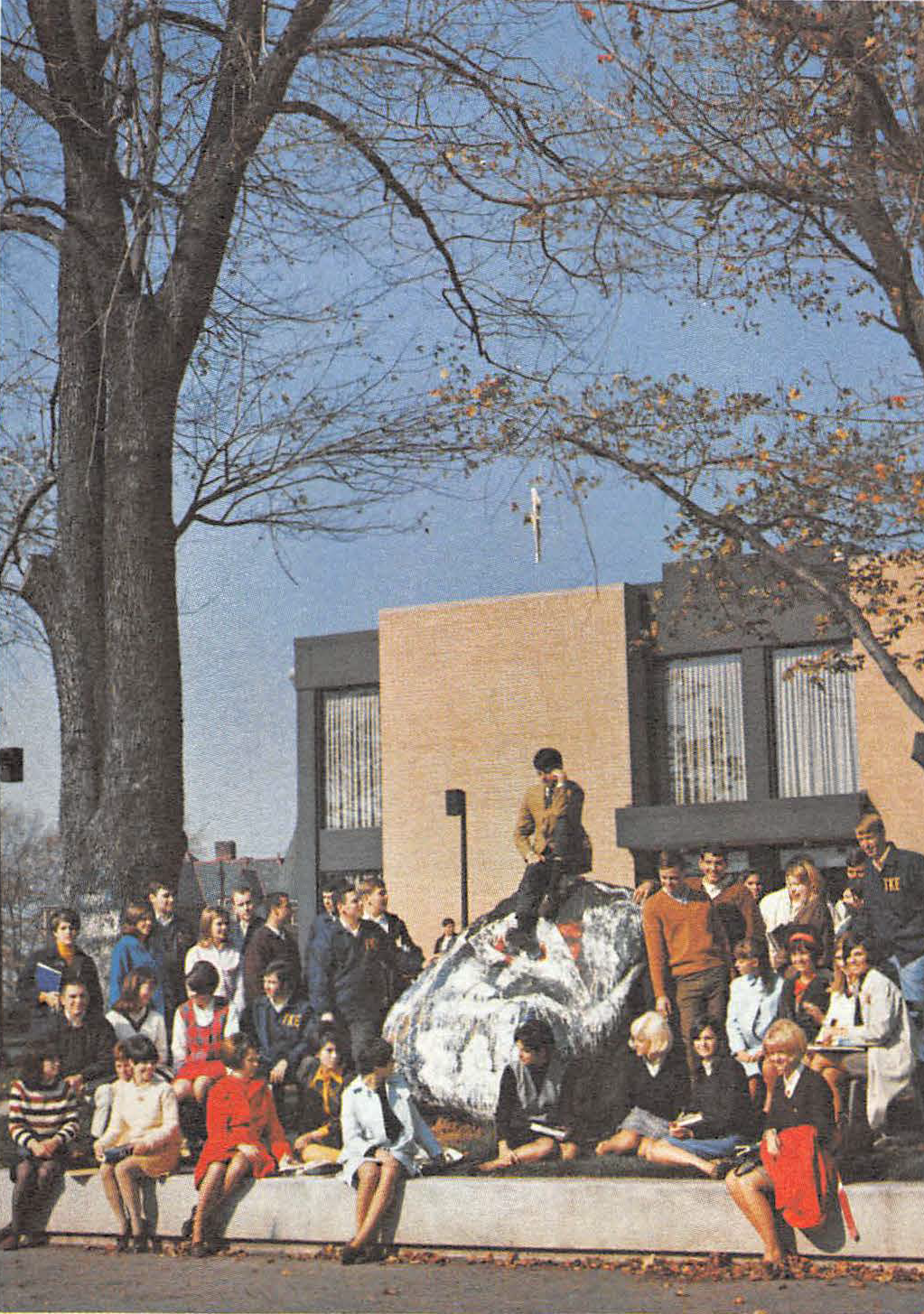By Raeghan Hilton
Painting the campus rock has been a tradition at Youngstown State University for over 50 years. Students use the rock to advertise events, support causes or represent opinions of individuals or groups.
Lisa Garofali, archives and records management specialist for the YSU Archives and Special Collections, said the rock was found during the construction of Kilcawley Center in 1966.
“It was left at the request of the student council and Paul Gregory as a senior class gift to the university community. They wanted it to be a place where students could meet and unite,” Garofali said.
This tradition of painting the rock started in March 1967, after an article was published in The Jambar titled “What Ever Happened To Tradition Rock?”
In the article, Ben Hayek, The Jambar’s managing editor at the time, acknowledged the lack of tradition surrounding tradition rock.
“This monument to tradition has seen neither a drop of paint nor the head of a chisel. We have cheated this rock. We have bestowed upon it the greatest humiliation that any campus rock could ever receive. We have ignored it. Already a year and a half has passed and nobody has loved it, loathed it, or written editorials about it,” Hayek wrote.
Hayek went on to say tradition rock may be the only tradition that YSU might ever have. Less than a week later, The Jambar published a photo showing tradition rock painted.
To this day, students and organizations alike continue to paint the rock per this tradition. Rayvin Gorrell, a junior anthropology major and YSUnity president, explained her organization’s connection to the rock.
“It’s very, very important for us to be able to paint the rock because in the past people in the LGBTQ+ community have not had the opportunity to have a voice. So I think it’s very important that the rock is an opportunity for us to have a voice on campus and even in the YSU community,” Gorrell said.
Over the years, the tradition rock has been in a few different locations.
“Originally, the rock was located on the east side of Kilcawley Center where the fountain is today. And it was moved in 1975 during the campus landscaping master plan, where they redid a lot of landscaping on campus. The students wanted it to be in a more central location so they moved it directly in the middle of Kilcawley in the front, on the south side,” Garofali said.
The tradition rock was then moved farther east on campus in 2006, where it remains today, according to Garofali.
Garofali said tradition rock was moved because students were no longer just painting the rock but the areas surrounding it. This became a safety concern when the sidewalk around the rock became slippery to walk on.
When it comes to protocol for painting of the rock, John Young, executive director of Student Experience, said there are expectations but only one formal rule.
“It’s kind of always been an unspoken code, if you will, in regards to respecting it and I guess what goes on it. There is no protocol in regards to signing up for a time to paint it, or ownership of it, if that makes sense, like a space. The only restriction is that the paint stays on the rock itself and not any of the adjacent areas,” Young said.
